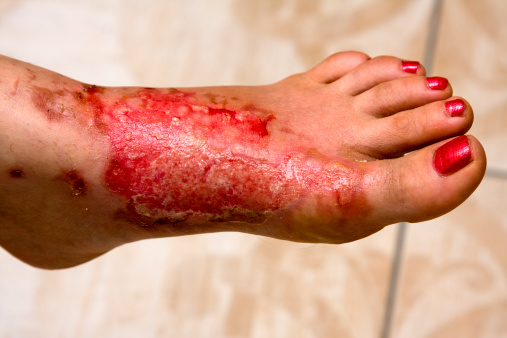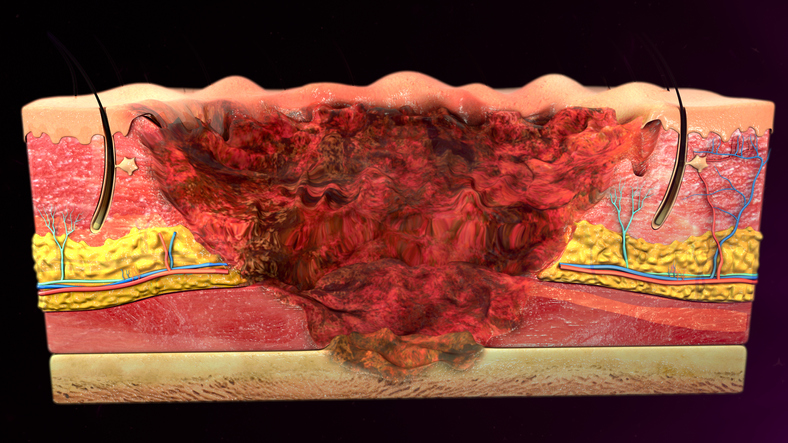Skin Burns

Burn injuries are caused by fires or flames, hot liquids or steam, contact with a hot object or agent like grease or tar, chemicals, or electricity. Half a million Americans seek medical care for accidental burns each year. First-degree burns, and most second-degree burns, heal with at-home treatments. Third-degree burns can be life-threatening and require specialized medical care.
Third-degree burns can be life-threatening and often require skin grafts. For permanent wound coverage, a piece of your own skin is taken from another part of the body (donor skin) to close the open area. Skin grafts replace damaged tissue with healthy skin from another of the uninjured part of the person’s body. If the person does not have enough skin available for a graft at the time of injury, a temporary source of graft can come from a deceased donor or a human-made (artificial) source.
When evaluating a burn injury, doctors look at two factors: how deep the burn is and the burn size which is measured by the percent total body surface area (% TBSA). The burn depth depends on how hot the agent was and how long the burned area was in contact with the agent and how thick the skin is in the area.

OmegaSkin™ readily available sheets of human skin substitute have proven effective in full-thickness wounds leaving minimal to no scarring. This would be a valuable tool to augment or replace skin grafting. Soon to be available, QuikSkin is our liquid sprayable human skin substitute offering touch-free application to alleviate the pain of application to raw nerve endings in burn patients.
